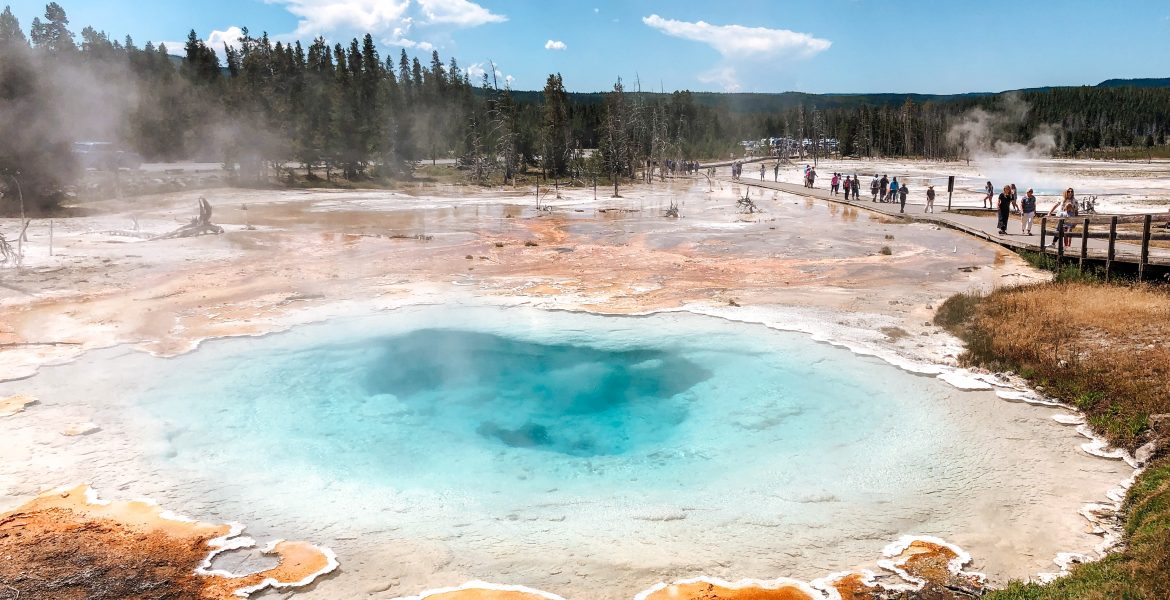
The Best Places in West Yellowstone National Park: Old Faithful and Grand Prismatic Springs
#PNW . Hiking . Idaho . Montana . Outdoor Recreation . Trailer Camping . Travel . WyomingYellowstone Vacation – Recommended 7 Day Itinerary (Day 3)
You are viewing Day 3 of our 7-Day Itinerary for Yellowstone National Park, “The Best Places in West Yellowstone National Park: Old Faithful and Grand Prismatic Springs.” Click on any of the days in the list below to view the post for other days. You can also click here to view our full, printable 7-Day itinerary with highlights from each day to help you plan your own adventure to and through Yellowstone National Park.
Planning a trip soon? Use our links to get discounted tickets, rental cars, and more! Our site is partly supported by affiliate partnerships; your purchases through our affiliate links help support our site and the development of even more great content!
Day 1: Yellowstone Road Trip
Day 2: Henrys Lake State Park
Day 3: Yellowstone National Park – Old Faithful and Grand Prismatic Springs – THIS POST
- Get creative at Fountain Paint Pot
- Do the geyser walk: Beehive, Old Faithful, Grand Geyser, and Castle Geyser
- Eat lunch at the Old Faithful Inn
- Run with the buffalo (at a safe distance, of course)
- Walk across the glassy surface of Grand Prismatic Springs
Day 4: Lake Day and West Yellowstone
Day 5: Jackson, Wyoming and the Tetons
Day 6: Yellowstone Hot Springs – Mammoth Hot Springs
Day 7: Fishing Henrys Lake
The Best Places to go in Yellowstone National Park – Day 3: Old Faithful and Grand Prismatic Springs
Pro Tips for Yellowstone National Park:
- Plan ahead: federal campgrounds fill up FAST, as in minutes after the sites become available online, 6 months prior to travel dates. Figure out when you plan to travel and then set a calendar reminder 6 months ahead for federal campgrounds through Recreation.gov.
- Here’s one trick for booking a federal campsite: if you want to travel on a specific date but have some flexibility with your start date, you can book the first day of travel 6 months in advance, extending as far out as you plan to stay. So if you want to travel on July 4, for example, but can start your trip on June 30, you can book 6 months before June 30 extending through the 4th. That way, you don’t have to wait until exactly 6 months before the holiday booking date, which will fill up as soon as they are released.
- The absolute best way to enjoy Yellowstone is to stay inside the park, either in one of the park’s many campgrounds or at one of the park’s hotels (like the Old Faithful Inn or the Mammoth Hot Springs Hotel). If you’re coming into the park like we are, the earlier you arrive, the better.
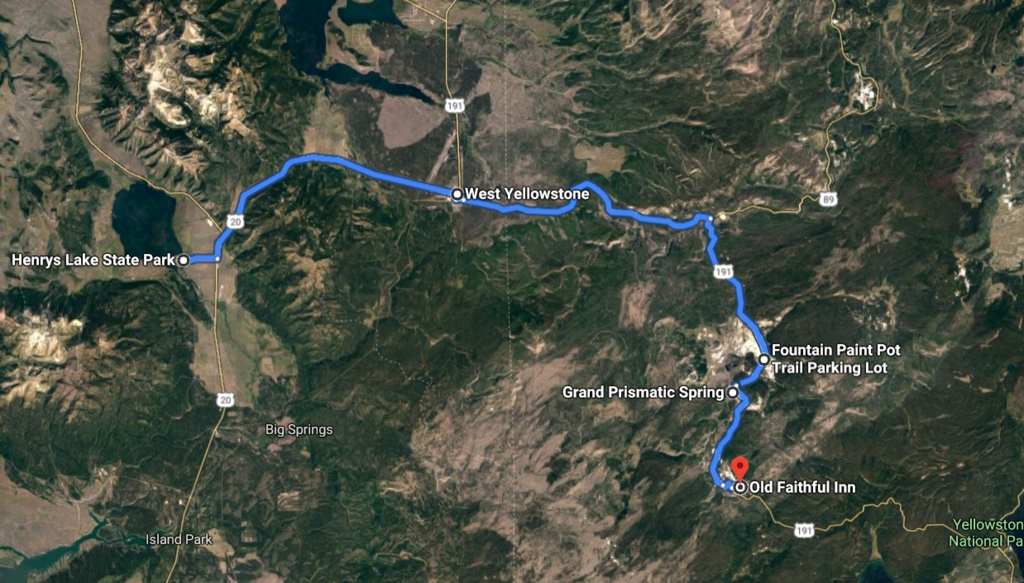
What To Do in West Yellowstone National Park: Get Creative at Fountain Paint Pots
Here’s another quick tip for accessing the park: go online and purchase an annual park pass prior to your visit, and you can jump in the fast lane for pre-paid pass holders. The later you arrive, the more valuable this becomes. (At 8:oo am, the “fast” lane actually took longer than the other regular lines, but it’s generally the fastest way to get in).
Our first stop today is the Fountain Paint Pots, a striking complex of thermal pools, geysers, and the bubbling, gurgling paint pots that give the area its name. Delicate bacteria mats surround the underwater thermal springs, coloring the grounds shades of orange, yellow, and white around the deep blue waters bubbling up from the ground. The hollowed-out remains of trees stand starkly against the blue sky where the bacteria and minerals have choked out their root systems, leaving an eerie forest of deadwood among the sulfuric ground.
We picked the perfect day to visit Fountain Paint Pot, because the hot, humid air cooled when thunderclouds rolled by. The dramatic sky also made for even more gorgeous photos, highlighting the scale of this incredible landscape. My favorite part of the thermal pools has to be the perfectly clear boiling hot water and the deep blues it creates against the bright white minerals just beneath the surface. Contrast that with the vibrant orange and yellow bacteria mats at the edge, and the ground looks more like an abstract painting than a natural feature you’d expect to see while out hiking around the forest. To be fair, this IS an active volcanic zone, and there’s a reason Yellowstone is known worldwide for its biodiversity and unique ecosystems. But this is really an amazing landscape, even for someone who has hiked some of the most scenic locations around the world.
Fountain Paint Pot: Making Mud
“This vat of bubbling mud contains the perfect mix of ingredients to create mudpots: heat, gases, water, volcanic rock, minerals, acid, and even living microorganisms! Heat-loving ‘thermophiles’ consume some of the gases and help convert them into sulfuric acid. The acid breaks down rock to form clay – clay that mixes with water in mudpots.”
– Interpretive Sign at Fountain Paint Pot, Yellowstone National Park
Fountain Paint Pots is a lot more than just the bubbling clay and nearby thermal springs; wooden walkways continue out to a series of small geysers and panoramic views of the surrounding valley before circling back around to the most colorful thermal pools and bare trees sticking up like matchsticks from the clay. There’s Red Spouter and the leather pool, not far from Twig, Fountain, and Morning Geysers. Spasm and Clepsydra Geysers sit further along the path before the half-mile walkway circles back to Celestine Pool.
“The half-mile (.8k) Fountain Paint Pots trail takes you through one of the most complex and dynamic hydrothermal areas in Yellowstone. Here you will find geysers, hot springs, fumaroles, and mudpots. The geysers in the Fountain Group exhibit a variety of eruption patterns and intervals. In the spring, the mudpots are thin, soupy, and splash a lot. As the year goes on and there is less water, they become thick and gurgly.”
– Interpretive Sign at the Entrance to Fountain Paint Pots, Yellowstone National Park
Do the Geyser Walk: Beehive, Old Faithful, Grand Geyser, and Castle Geyser
Continuing on from Fountain Paint Pots, we decided to save Grand Prismatic Spring for the afternoon, once we explore the geysers around Old Faithful and the famous Old Faithful Inn and Lodge. Grand Prismatic is about halfway between Fountain Paint Pots and Old Faithful, but by mid-morning, the crowds had swelled and people were parking a half mile away to walk back to the access point. (This turned out to be a great decision; we explored the area around Old Faithful for hours in the late morning, and by the time we doubled back to Grand Prismatic after lunch at the Inn, the crowds had thinned there, as well).
Approaching the Old Faithful Inn and surrounding development from the North, you’ll pass a Sinclair service station and the Old Faithful General Stores before spotting the Inn and several surrounding geysers. Immediately to the North of the complex sits Castle Geyser, with Grand Geyser beyond that. Across the main street to the Northeast you’ll see Beehive Geyser; Beehive is easy to mistake for Old Faithful, but you’ll have to continue on beyond the Inn to the Southeast to see the most famous Geyser of all, Old Faithful.
The Best Places in West Yellowstone: The Old Faithful Inn
The Old Faithful Inn has a partially-covered viewing platform on the second story above the main entrance where you can get an elevated view of the eruption every 70 minutes or so. And a wide, circular walkway in front of the geyser connects the Inn to the Lodge and the more contemporary visitor center in-between. Expect exuberant, cheering crowds when Old Faithful does its thing. For a more secluded view, watch the eruption from the paths on the opposite side. Even better, hike up the hill path that leads to Geyser Hill and watch the sulfuric spray from a distance, with the Inn and surrounding hills beyond.
The landscapes in Yellowstone are so varied, so unique, and so interesting that it’s hard to pick a favorite. If I had to choose, though, I’d pick the chains of thermal pools connecting the geysers behind Old Faithful on the opposite bank of the Firehole River. The crystalline formations, deep pools, and labyrinths of volcanic vents combine to create one of the most spectacular zones in Yellowstone. Don’t get me wrong; there are many epic, otherworldly landscapes throughout the park. But I spent hours photographing the unique formations and cones and vents and springs along the North Bank of the Firehole. Maybe I just like the aptly-named river. But whatever the reason, I found myself drawn to this dramatic landscape and all its variations more than most of the other spots we visited.
The girls are used to my photography and the time it takes to get that “perfect” shot. They soon left me behind to photograph the pools that to them had started to all look alike. As they found their way back to the Old Faithful Inn, I made my way back across the Firehole River to Castle Geyser, hoping to see one of its two daily eruptions (Spoiler alert: Castle Geyser erupted just as we were driving away from the Inn, so I didn’t manage to capture it against the dark thunderclouds in the distance).
Castle Geyser
“The massive cone is a sign of old age. Eruption after eruption, probably for thousands of years, scalding water has deposited this mineral formation. By contrast, Old Faithful’s fledgling cone may be only a few hundred years old. Castle Geyser has dramatically changed its surroundings. By altering soil chemistry, the geyser has devoured part of a pine forest and turned it into a thermal desert. Tree skeletons are entombed within the cone.”
– Interpretive Sign at Castle Geyser, Yellowstone National Park
The Best Place for Lunch in Yellowstone: The Old Faithful Inn
One of the most iconic sties in Yellowstone, the Old Faithful Inn, nearly burned down in the great fire of 1988. Architect Robert C. Reamer designed the Inn, which was constructed with lodgepole pine and volcanic rhyolite from the surrounding area. (Read this NPR piece about the fire that threatened the Old Faithful Inn).
The interior space soars up past the surrounding floors, each bordered by heavy wooden railings that draw the eyes upward to the “Crow’s Nest,” the central lookout that is now closed to the public but used to host a stringed orchestra that entertained visiting guests below. The Inn is truly one-of-a-kind, a national architectural and historical treasure, an Old West icon in the center of the original national park. The Old Faithful Inn is an emblem of Yellowstone and the wilderness that surrounds the 100-year-old structure. (Check out our free, downloadable stock images of the Inn here).
The food at the main restaurant is pretty good, too. You can choose from locally-sourced, organic bison, cheese plates, a delicious salmon spread, and vegetarian options to enjoy in the lodgepole pine dining room. If you’re in a hurry to get back outside, there’s a buffet option as well.

Run with the Buffalo (at a Safe Distance, of Course)
As we drove through the park along the winding, two-lane roads that criss-cross Yellowstone, we were able to move around at a reasonable pace. That is until we came upon a line of cars, trucks, trailers, and motorcycles slowly making their way around a very large bison that was slowly plodding down the middle of the road, apparently not too annoyed by all the idling vehicles and curious tourists snapping away. Once the shoulder opened up into a narrow meadow along the river, the massive beast headed down toward the water.
A little later, another large bison made its way along a small stream before heading back up into the meadow, directly toward me. I kept a safe distance (the park recommends at least 100 yards), and used my lens to get a little bit closer. (We found out later today that the bison we saw near Old Faithful charged and tossed a 9-year-old girl into the air after a crowd got to close and may have even been petting the bison’s coat. Needless to say, these are WILD ANIMALS and should be given their space, even though it’s tempting to want to get close and hang out with the wildlife).
The rain started to fall as I stood in the field, watching the bison meander through the grassy field, stopping occasionally to nibble on some grass before making his way closer to me and the road. And instead of trying to get even closer to pet its coat or otherwise interact with the animal, I slowly backed away and left it alone.
Walk Across the Glassy Surface of Grand Prismatic Springs
After taking my fair share of American Bison photos (which you can download and use from our stock photography collection), we headed back to Grand Prismatic Springs, the rainbow-colored thermal complex that is often featured in aerial photography of Yellowstone. From the ground, it’s equally impressive, because of the adjoining craters and glassy surface of the sprawling hot springs. Even though it’s harder to see the vibrant colors of the springs up close, there are enough vantage points and lookout spots to get a good feel for the site.

Grand Prismatic Spring: Prism of Light, Spectrum of Life.
“Grand Prismatic Spring is the largest and one of the most brilliant of Yellowstone’s many colorful hot springs. Its massive expanse stretches approximately 200 feet (61m) across. The high temperature of its water – 160F° (70C°) – ensures that the spring is often cloaked in steam.”
“Deep beneath us, magma from an active volcano heats water that rises to the surface through fissures in the rocks. The result is a hot spring that pours almost 500 gallons of hot water each minute into the Firehole River. Minerals dissolved in the hot water are deposited and gradually build the gracefully terraced shoulders of this feature.”
– Interpretive Sign at Prismatic Hot Spring, Yellowstone National Park Foundation, NASA Astrobiology Institute, and Lockheed Martin Space Operations
“The intense blue color in the center of this hot spring is due to sunlight being scattered by fine particles suspended in the water. The yellow, orange, and brown colors encircling the hot spring and lining the runoff channels are caused by thermophiles – heat-loving microorganisms. The microbes contain colorful pigmnts that allow them to make energy from sunlight and thrive in the harsh conditions of hot springs.”
“The billions of colorful microorganisms lining this hot spring’s runoff channels are called ‘extremeophiles’ because they live in conditions that were once thought to be too extreme to host life. Extremeophiles that live in hot springs are called ‘thermophiles’ – heat-lovers.”
“Yellowstone National Park is one of the most accessible places to study extreme environments and the organisms that inhabit them. Understanding lifeforms here provides clues for scientists searching for life elsewhere in the universe. Because conditions on other planets in our solar system are harsh, if life exists elsewhere it is probably as some form of microscopic extremeophile.”
– Interpretive Sign at Prismatic Hot Spring, Yellowstone National Park Foundation, NASA Astrobiology Institute, and Lockheed Martin Space Operations
Visiting the Best Places in West Yellowstone National Park: You’re Not Alone!
Yellowstone has around 4 million visitors each year mostly during the peak season of May through September. The sheer number of people coming through the park creates an enormous impact on the park’s ecosystems and natural resources. The park service has done a remarkable job protecting these natural environments while designing ways for tourists to visit and view the park’s remarkable points of interest. From wide, accessible elevated walkways to carefully planned pullouts and central operations run from the historical Fort Yellowstone at Mammoth Hot Springs, the federal employees who manage and operate the park have managed to maintain an accessible national treasure while minimizing impact on the environment. And all this despite skyrocketing numbers of tourists each year.
The park service even has remote “arms” that can reach out and collect objects that fall (or are thrown) into fragile ecosystems like the bacteria mats at Prismatic Hot Spring. Whether they blew off in a windstorm or were thrown into the spring by devious tourists, the handful of hats that sat among the striated colors of the springs will hopefully be fished out before too long – and before any copy-cat hat-throwers get the same idea.
Miniature Forests
“Within the rainbow of orange, brown, and red colors, some microorganisms live in communities of thick mats. Like miniature forests, these mats have a vertical structure and stratified functions. Microbes that live on or near the top of the mat (similar to a forest canopy) use sunlight to perform photosynthesis, which fuels the mat community. Organisms living deeper in the mat (similar to a forest understory) derive energy from chemicals produced by the surface microbes. They perform other vital functions such as decomposition and recycling nutrients to the mat’s ‘canopy’ just like their counterparts in a forest. All of these organisms create an ecosystem in the expanse of a few inches.”
– Interpretive Sign at Prismatic Hot Spring, Yellowstone National Park Foundation, NASA Astrobiology Institute, and Lockheed Martin Space Operations




















































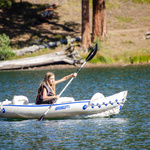
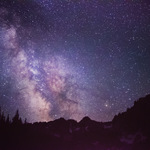
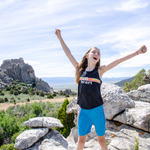
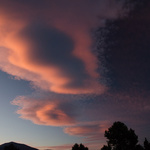
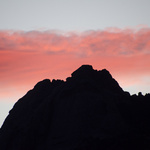
[…] Yellowstone: Old Faithful and Grand Prismatic Springs […]
Thanks for putting together this very detailed information about visiting the Yellowstone National Park. Agree that the landscapes are too stunning to pick one for favorite. Good to know that the park authorities have been taking measures to protect the park from the ever increasing number of tourists.
There’s so much to see in Yellowstone! Loved your pictures and can’t wait to return
Yellowstone national park is on my bucketlist. Thanks for sharing this lovely post…pictures are inspiring!
Your photos are absolutely stunning. I’ve wanted to go Yellowstone National Park for a long time, but now I want to go even more!
Great post! We are headed from Oregon to Michigan in mid June and are hoping to safely make some stops along the way. Last year we saw my first wolf at Yellowstone! It was awesome.
[…] Yellowstone: Old Faithful and Grand Prismatic Springs […]
[…] Yellowstone: Old Faithful and Grand Prismatic Springs […]
[…] Yellowstone: Old Faithful and Grand Prismatic Springs […]